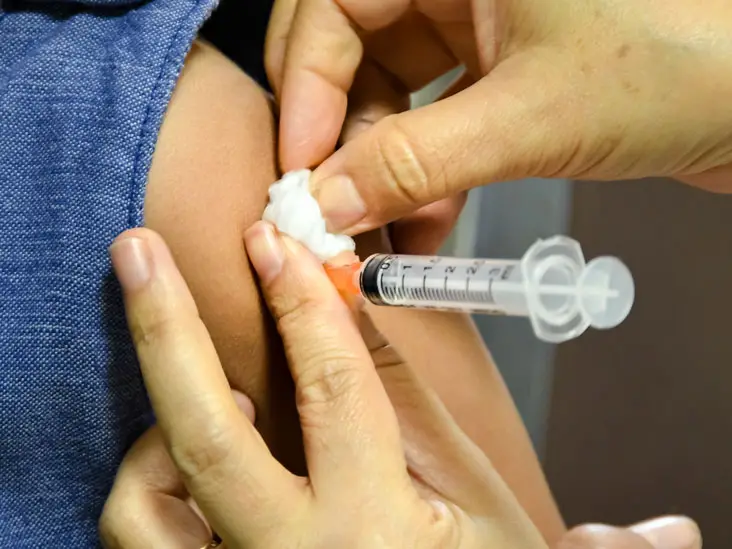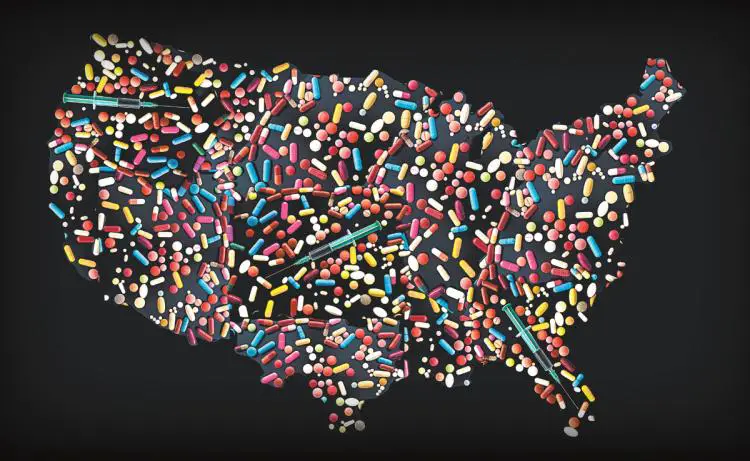Earlier this month, the U.S. Food and Drug Administration approved Indivior’s experimental drug for public use in an attempt to fight America’s growing opioid addiction issue. The London-based company, which specializes in addiction treatment, created Sublocade, the first injectable drug for patients who are recovering from addiction to heroin, prescription painkillers and other opioids. With one injection a month administered by a healthcare professional, the drug has the potential to reduce abuse and relapses after patients stop taking their current medication.
According to an article by Newsweek, the drug was approved following two clinical studies that included more than eight hundred adults who suffered from moderate-to-severe opioid use disorder. The results revealed that those “who were injected with Sublocade passed more urine tests and self-reported less drug opioid use during a six-month period, compared to the placebo group.”
This approval came at a good time as America is experiencing one of the deadliest drug epidemics in its history. According to ABC News, more than sixty-four thousand Americans died from drug overdoses last year, most of which involved opioids. However, just how effective will this drug be, and most importantly, could it be the drug to help end the opioid crisis in America?
What are opioids?
Opioid medications are classified by the FDA as, “powerful pain-reducing medications that include prescription oxycodone, hydrocodone and morphine, among others, and have both benefits as well as potentially serious risks.” They are mainly given to people to help soothe bodily pain after surgery or serious injury. When taken properly, these medications can help manage a patient’s pain, but when abused or misused, they can cause serious harm.
Opioids impact opioid receptors in the spinal cord and brain to decrease the intensity of the pain people are feeling, according to the National Institute on Drug Abuse. In addition, it increases the amount of dopamine, which is a neurotransmitter that causes euphoria, or intense pleasure. Dopamine gets released into the limbic system that houses the brain’s reward circuit, so our brain gets trained that the feeling we get from opioids is a good thing. This is why people can become so addicted to opioid medication very quickly, even if they take the appropriate amount, their brain basically rewards them for taking it.
Even though opioids are addictive, they are legal, so many doctors still prescribe them to patients who are in pain after an injury or surgery. According to the U.S. Department of Justice Drug Enforcement Administration, between 2006 and 2014, the most widely prescribed opioid was Vicodin. In 2014 alone, 7.8 billion Vicodin pills were distributed in America, quite an increase from the number of 6.4 billion dispersed in 2016.
Doctors are starting to say no to opioids when trying to prescribe a pill for patients who have acute pain, which is pain that won’t last after a patient’s recovery from an injury or surgery. However, the underlying issue at hand is the fact that there is a limited scientific direction for doctors to follow while treating chronic pain, which is pain that will never go away, such as back pain and fibromyalgia. According to a study conducted by a National Institute of Health expert panel, prescription of opioid medication to treat chronic pain has increased dramatically, but there’s little guidance on how to actually use opioids.
Because there are no other drug options to help people with chronic pain, doctors still prescribe patients pain medication in hopes that it will at least make them feel more comfortable. This logic, coupled with the harmful effects of opioid medication, have made many Americans dependent on the drug to help soothe their pain, and once they have some of it, they need to keep taking it, which has led to our current opioid crisis.
So, what is the opioid epidemic?
The opioid epidemic is not only the issue of addiction to opioid medication, it’s also the issue of misuse, abuse and subsequent deadly overdose crisis in America. Every single day, more than ninety Americans die after overdosing on opioids and it is only getting worse.
The origin of this crisis can be traced back more than twenty years to the 1990s when Purdue Pharma, a big pharmaceutical company, introduced OxyContin into the market. OxyContin is a long-acting version of oxycodone that slowly releases the drug over twelve hours. It was hailed as a major breakthrough in science because of its slow release and all-day comfort to patients and generated close to $35 billion in revenue for the company.
The problem? The harmful, sole ingredient oxycodone, which is similar to heroin and up to twice as strong as morphine. That’s pretty powerful, which is why many doctors at the time were hesitant to prescribe it. Purdue Pharma found a way around those timid notions by funding their own research so their doctors could claim that the drug was not addictive and completely safe.
OxyContin did help many patients with their intense pain, but many also became hooked on the drug, and by 1999, two hundred thousand Americans died from OxyContin overdoses and other prescription opioids.
Fast forward to this past October, President Donald Trump declared the opioid epidemic a “national public health emergency.” Trump went on to say that, “’Nobody has seen anything like what is going on now,” according to CNN.
Today, about a thousand people die every week from drug abuses and two-thirds of those deaths are from opioid overdoses. It’s no wonder the opioid epidemic is now being regarded as the worst public health crisis in American history, affecting people of all races, ages and economic standing. The hardest hit demographic, however, is white people and Native Americans, which is a shift from previous drug epidemics. According to PBS, opioid deaths among white Americans in 2014 was 7.9 deaths per one hundred thousand people, compared to 3.3 deaths per the same number for black Americans. The rate was even higher amongst Native Americans with 8.4 deaths.
Furthermore, according to the same PBS article, people between the age of forty-five and fifty-four are more likely to die by opioids than any other age group, with a whopping 11.7 deaths per one hundred thousand people. In comparison, millennials, people between the ages of fifteen and twenty-four, had a rate of 3.1 deaths. These statistics are scaring many civilians, government officials and medical professionals.
How Sublocade will affect the opioid crisis in America
Sublocade is the first injectable form of an old opioid addiction drug called buprenorphine, commonly given to recovering opioid addicts. Buprenorphine produces the same effects as opioids, such as euphoria, but starting at a lower intensity and gradually increasing with each dose until they level off. Due to this mechanism, it lowers the risk of misuse, dependency and side effects.

The issue with buprenorphine is that it is popularly sold on the black market. Sublocade is a better solution because it has to be injected by a health care professional instead of a pill or strips that are sent home, so people can’t sell it on the black market. Once the drug is injected, it transforms into a solid mass that dissolves slowly over a month. So, instead of recovering addicts taking the buprenorphine pill once a day, they can get this injection once a month, which will hopefully reduce relapse.
According to an FDA statement, following the two clinical studies on the drug, a high number of patients on Sublocade had “no evidence of illicit opioid use throughout the treatment period.” These results are promising to many people both in and out of the medical field.
Without the constant reminder of the addiction, patients can continue to live their daily lives and move forward without the constant need for opioid medication. Sublocade has the potential to help treat numerous Americans who suffer from opioid addiction and the future of the opioid epidemic is finally a little more optimistic with this new drug on the market.

















